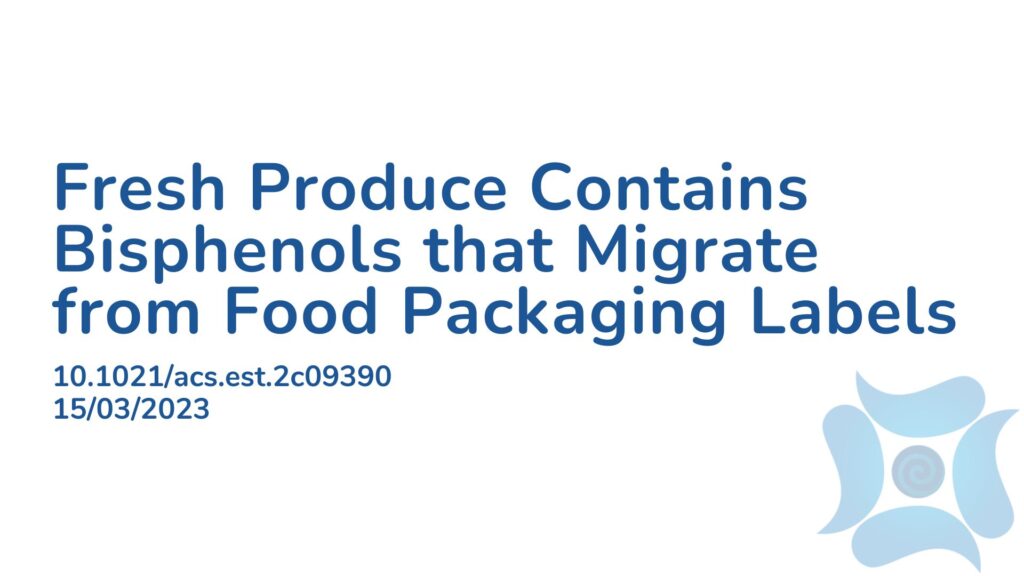Summary:
Many countries reduced or banned the use of Bisphenol A (BPA) which is a toxic chemical found in the lining of food cans, plastics and receipts. BPA is linked to prostate and breast cancer. However, BPA was often replaced with similarly toxic and hormone disruptive chemicals such as Bisphenol S (BPS). This study looked at whether the replacement chemical BPS can migrate from food packaging to fresh food and found that it is a large contributor to dietary exposure to bisphenols. After analysing 140 packaging materials used in Canada for packaged fresh food, significant amounts of BPS and color-developing chemicals were present. The researchers wrapped fish in a thermal label containing these chemicals for 5 days and found the fish had significantly high levels of BPS. This study showed that BPS and color developers migrate from packaging materials into food. In the same way that BPA was, BPS needs to be thoroughly assessed and regulated for safety.
Abstract:
To test the hypothesis that migration from the thermal labels on plastic film packaging is a major source of exposure to bisphenols and alternative color developers in food, we analyzed 140 packaging materials from packaged fresh food purchased in North America. No bisphenol A (BPA) was detected in either the packaging samples or thermal labels. However, significant amounts of bisphenol S (BPS) and alternative color developers (up to 214 μg/cm2) were present in thermal labels; their relative occurrence varied among stores. In a controlled experiment, we wrapped fish in film with a thermal label for 5 days at 4 °C. The fish in contact with the label contained BPS (≤1140 ng/g wet weight [ww]), 4-hydroxyphenyl 4-isoprooxyphenylsulfone (D-8) (≤230 ng/g ww), bis(2-chloroethyl)ether-4,4’-dihydroxydiphenyl sulfone monomer (D-90) (≤3.41 ng/g ww), and/or Pergafast-201 (≤1.87 ng/g ww). The corresponding film samples were then tested using migration cells for 10 days; significantly higher BPS migration was observed systematically from the films with thermal labels compared to plain films. This study provides evidence, for the first time, that BPS and alternative thermal label color developers migrate from packaging materials into food. Further, BPS migration significantly exceeded the European Union Specific Migration Limit (50 ng/g ww), suggesting that further risk assessment studies are warranted.
Article Publication Date: 15/03/2023
DOI: 10.1021/acs.est.2c09390



